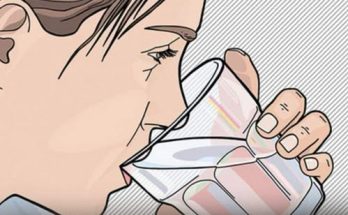The nurse had seen it all before—feverish students dragging themselves into her office, noses running, heads pounding. Over the past three days, three students had come in with flu-like symptoms, and naturally, she assumed the latest case was more of the same. After all, flu season had arrived in full force, and illnesses were spreading through the school like wildfire.
But the moment the newest student staggered into her office, she knew something was different. His skin was paler than the others, almost gray, and there was a strange sheen of sweat coating his forehead. His eyes were glassy, unfocused, and he seemed disoriented, struggling to answer even the simplest questions.
The nurse quickly assessed his vitals. His temperature was high—103 degrees—but what alarmed her more was his pulse: rapid, irregular. His breathing was shallow, and his fingers trembled as he clutched the edge of the exam table. She had assumed the flu, but flu patients didn’t typically present with such severe neurological symptoms.
Her instincts kicked in. She needed more information, fast. “Have you been anywhere unusual in the past few days?” she asked, trying to pinpoint a source. The student hesitated before mumbling something about a camping trip. That was the clue she needed.
The flu didn’t fit anymore, but another possibility did: carbon monoxide poisoning. She grabbed her pulse oximeter and checked his oxygen levels—they were dangerously low. This wasn’t a viral infection; it was poisoning.
Acting quickly, she called emergency services, explaining her suspicions. The paramedics arrived within minutes, administering oxygen to the struggling student. Sure enough, when the tests came back, carbon monoxide exposure was confirmed. If she had simply assumed it was the flu and sent him back to class, the outcome could have been tragic.
Later, she learned that the student and his family had spent the weekend in a poorly ventilated cabin, using a malfunctioning gas heater. The rest of his family had also shown mild symptoms but had dismissed them as simple fatigue. Thanks to the school nurse’s sharp eye and quick thinking, the student received the treatment he needed before things became critical.
The incident served as a reminder that not all illnesses present as they seem. While flu season may have made the assumption easy, a single look at the student had told the nurse something was wrong. Her experience, training, and willingness to question her first impression had saved a life that day.
It was a lesson for everyone—never jump to conclusions when it comes to health. Sometimes, a second look can make all the difference.

